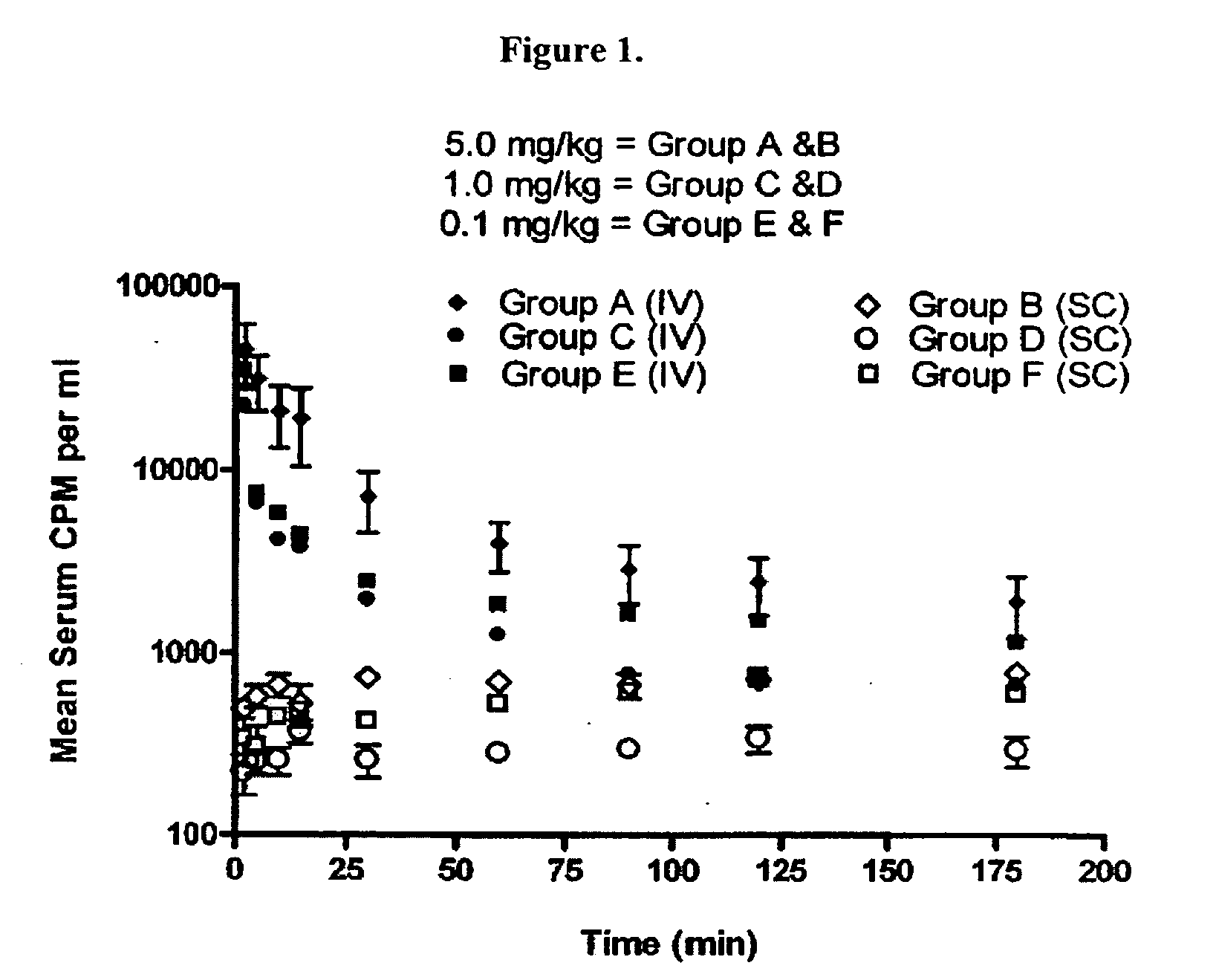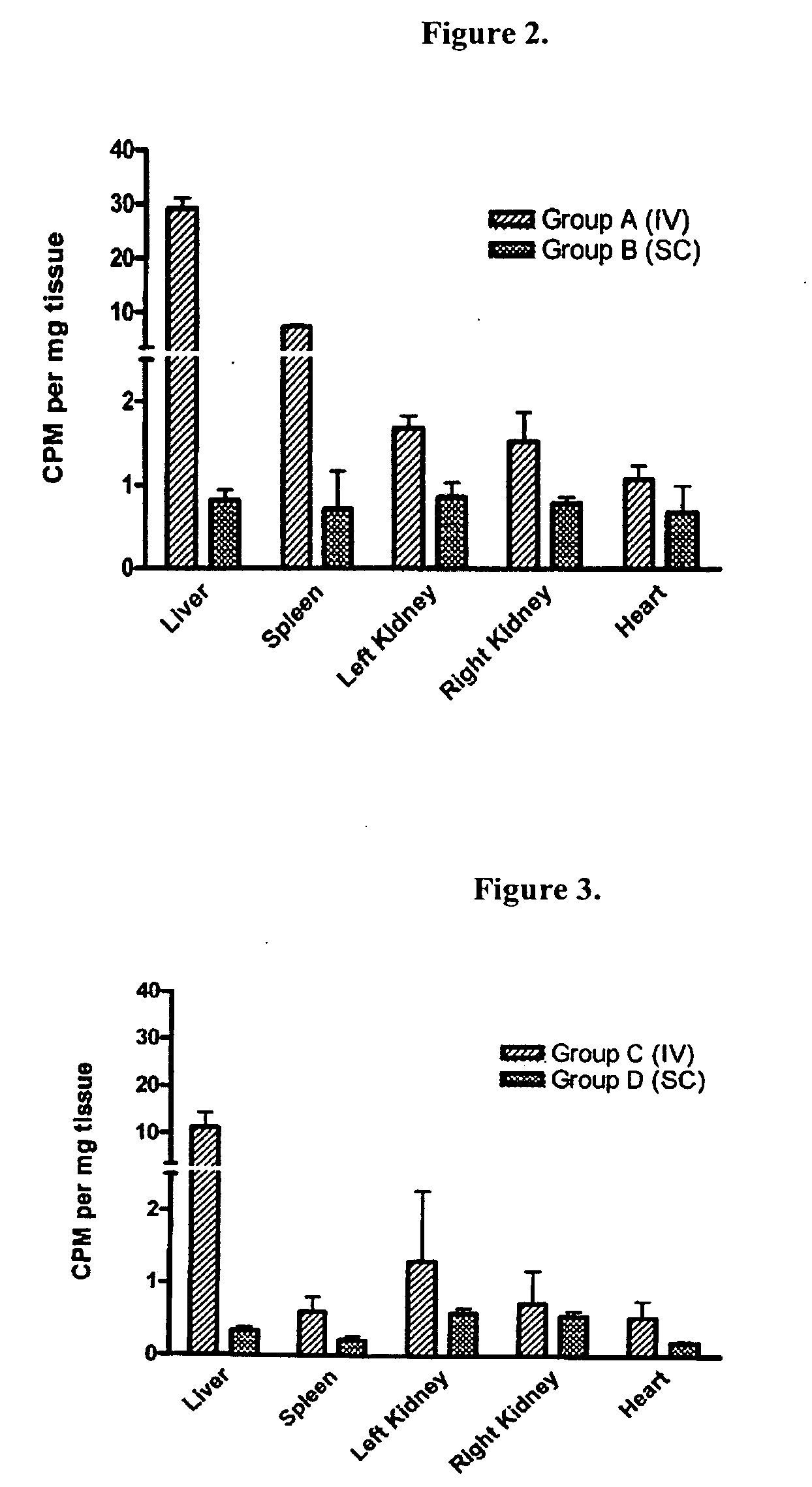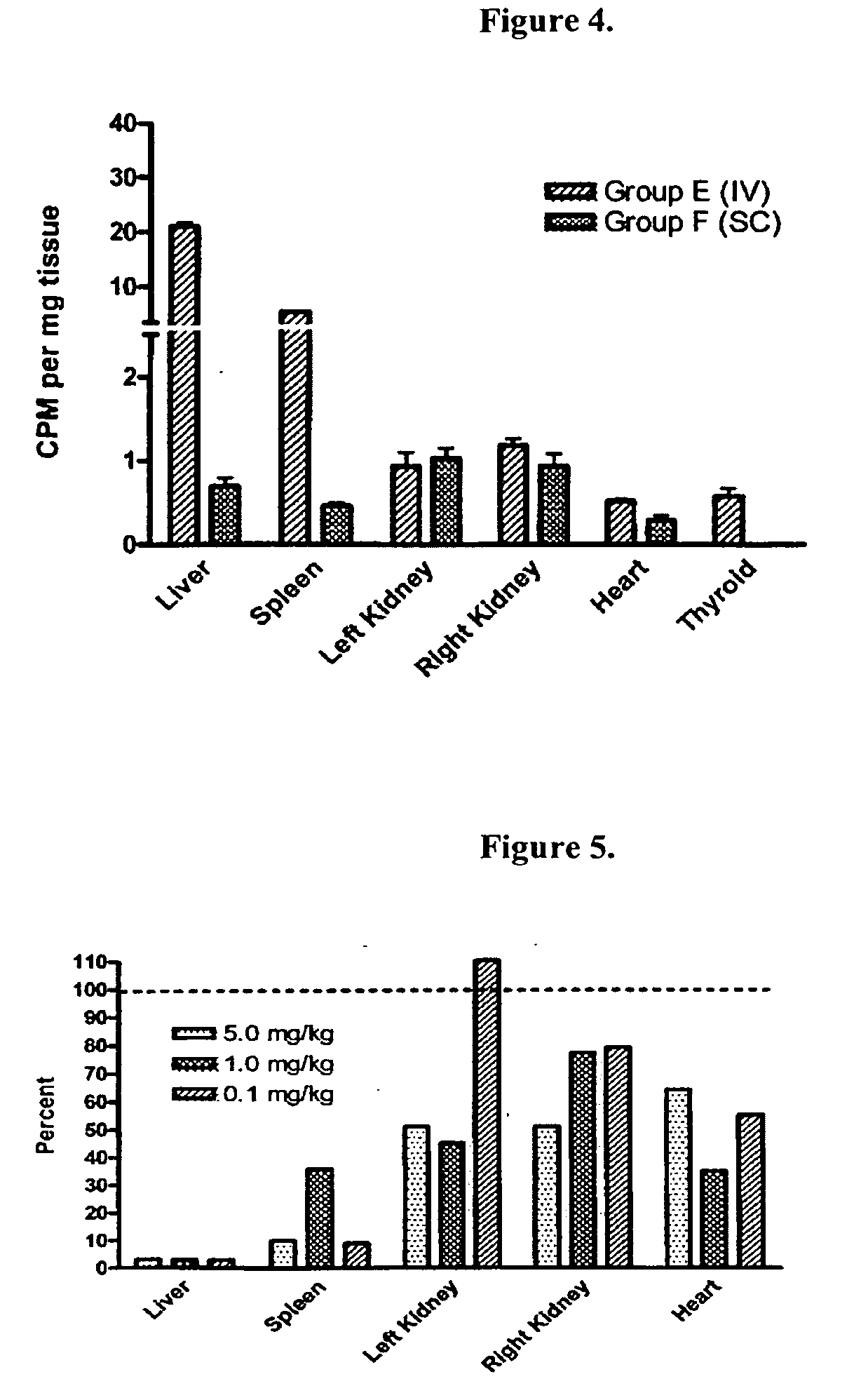Subcutaneous administration of alpha-galactosidase a
a technology of alpha-galactosidase and subcutaneous administration, which is applied in the direction of peptide/protein ingredients, drug compositions, enzymology, etc., can solve the problems of reducing renal function and rastically, and achieve the effect of increasing the fraction of normal glomeruli and reducing the fraction of glomeruli
- Summary
- Abstract
- Description
- Claims
- Application Information
AI Technical Summary
Benefits of technology
Problems solved by technology
Method used
Image
Examples
example 1
References for Example 1
[0175]Cho M E and J B Kopp. 2004. Fabry disease in the era of enzyme replacement therapy: a renal perspective. Pediatr Nephrol, 19(6): 583-593.[0176]Desnick R J, M Banikazemi, M Wasserstein. 2002. Enzyme replacement therapy for Fabry disease, an inherited nephropathy. Clinical Nephrology, 57(1): 1-8.[0177]Sessa A, M Meroni, G Battini, A Maglio, M Nebuloni, A Tosoni, V Panichi, and B Bertagnolio. 2002. Renal transplantation in patients with Fabry disease. Nephron, 91(2): 348-351.[0178]Tanaka M, T Ohashi, M Kobayashi, Y Eto, N Miyamura, K Nishida, E Araki, K Itoh, K Matsushita, M Hara, K Kuwahra, T Nakano, N Yasumoto, H Nonoguchi, and K Tomia. 2005. Identification of Fabry's disease by the screening of α-galactosidase A activity in male and female patients. Clinical Nephrology, 64(4): 281-287.[0179]Thurberg B L, H Rennke, R B Colvin, S Dikman, R E Gordon, A B Collins, R J Desnick, and M O'Callaghan. 2002. Globotriaosylceramide accumulation in the Fabry kidney i...
example 2
References for Example 2
[0193]Alroy J, S Sabnis, and J B Kopp. 2002. Renal pathology in Fabry disease. J Am Soc Nephrol, 13: S134-S138.[0194]Cho M E and J B Kopp. 2004. Fabry disease in the era of enzyme replacement therapy: a renal perspective. Pediatr Nephrol, 19(6): 583-593.[0195]Desnick R J, M Banikazemi, M Wasserstein. 2002. Enzyme replacement therapy for Fabry disease, an inherited nephropathy. Clinical Nephrology, 57(1): 1-8.[0196]Sessa A, M Meroni, G Battini, A Maglio, M Nebuloni, A Tosoni, V Panichi, and B Bertagnolio. 2002. Renal transplantation in patients with Fabry disease. Nephron, 91(2): 348-351.[0197]Tanaka M, T Ohashi, M Kobayashi, Y Eto, N Miyamura, K Nishida, E Araki, K Itoh, K Matsushita, M Hara, K Kuwahra, T Nakano, N Yasumoto, H Nonoguchi, and K Tomia. 2005. Identification of Fabry's disease by the screening of α-galactosidase A activity in male and female patients. Clinical Nephrology, 64(4): 281-287.[0198]Thurberg B L, H Rennke, R B Colvin, S Dikman, R E Gord...
example 3
References for Example 3
[0216]Cho M E and J B Kopp. 2004. Fabry disease in the era of enzyme replacement therapy: a renal perspective. Pediatr Nephrol, 19(6): 583-593.[0217]Desnick R J, M Banikazemi, M Wasserstein. 2002. Enzyme replacement therapy for Fabry disease, an inherited nephropathy. Clinical Nephrology, 57(1): 1-8.[0218]Sessa A, M Meroni, G Battini, A Maglio, M Nebuloni, A Tosoni, V Panichi, and B Bertagnolio. 2002. Renal transplantation in patients with Fabry disease. Nephron, 91(2): 348-351.[0219]Tanaka M, T Ohashi, M Kobayashi, Y Eto, N Miyamura, K Nishida, E Araki, K Itoh, K Matsushita, M Hara, K Kuwahra, T Nakano, N Yasumoto, H Nonoguchi, and K Tomia. 2005. Identification of Fabry's disease by the screening of α-galactosidase A activity in male and female patients. Clinical Nephrology, 64(4): 281-287.[0220]Thurberg B L, H Rennke, R B Colvin, S Dikman, R E Gordon, A B Collins, R J Desnick, and M O'Callaghan. 2002. Globotriaosylceramide accumulation in the Fabry kidney i...
PUM
| Property | Measurement | Unit |
|---|---|---|
| Fraction | aaaaa | aaaaa |
| Fraction | aaaaa | aaaaa |
| Fraction | aaaaa | aaaaa |
Abstract
Description
Claims
Application Information
 Login to View More
Login to View More - R&D
- Intellectual Property
- Life Sciences
- Materials
- Tech Scout
- Unparalleled Data Quality
- Higher Quality Content
- 60% Fewer Hallucinations
Browse by: Latest US Patents, China's latest patents, Technical Efficacy Thesaurus, Application Domain, Technology Topic, Popular Technical Reports.
© 2025 PatSnap. All rights reserved.Legal|Privacy policy|Modern Slavery Act Transparency Statement|Sitemap|About US| Contact US: help@patsnap.com



